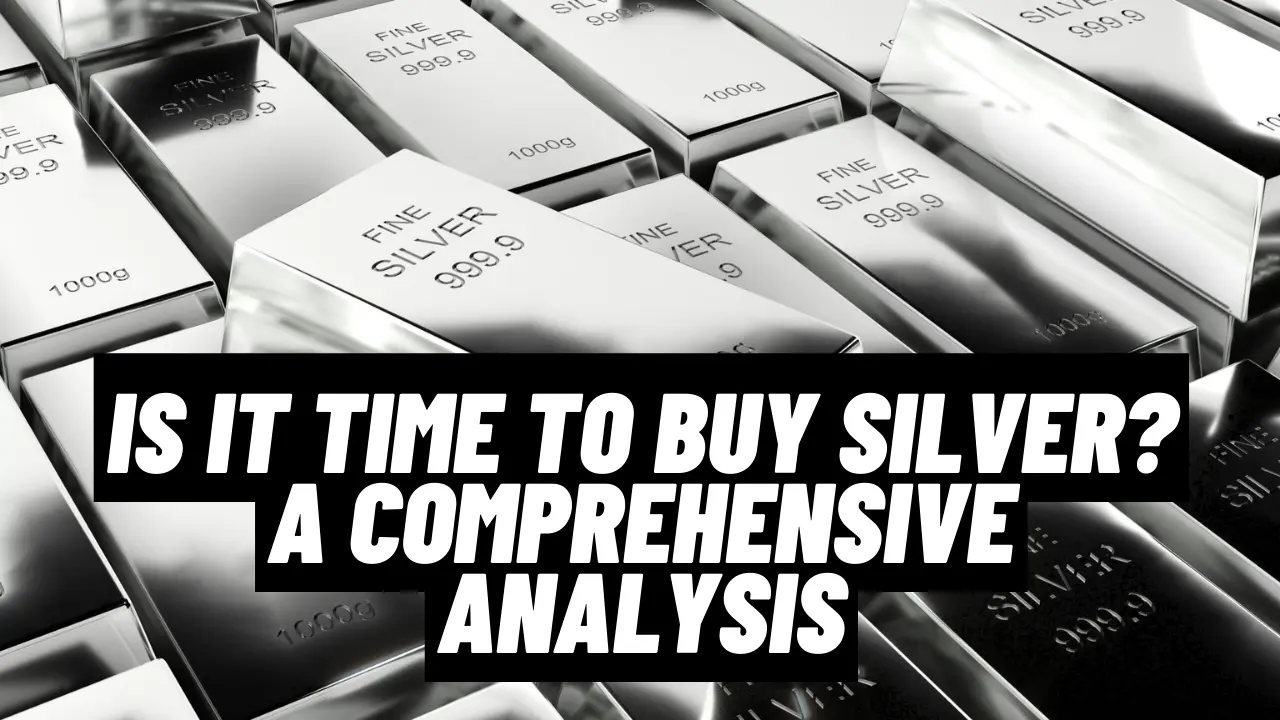Silver has always held a unique position in the world of investments. Known for its dual role as both a precious metal and an industrial commodity, silver offers diverse benefits and risks. As investors contemplate their next move, the question arises: Is it time to buy silver? Here’s a detailed analysis to help you decide.
1. Current Market Conditions
- Price Trends: Silver prices have been relatively volatile in recent months, reflecting broader economic uncertainties. As of mid-2024, silver prices have experienced fluctuations but remain significantly higher than historical averages.
- Economic Indicators: Economic indicators such as inflation rates, interest rates, and the strength of the US dollar play crucial roles in silver pricing. Current trends suggest rising inflation and fluctuating interest rates, which historically benefit precious metals like silver.
2. Inflation Hedge
- Historical Performance: Silver has traditionally been seen as a hedge against inflation. In periods of high inflation, silver prices tend to rise as investors seek tangible assets to preserve value.
- Current Inflationary Pressures: With global economies experiencing varying degrees of inflation, silver could serve as a protective measure against currency devaluation and rising consumer prices.
3. Industrial Demand
- Technological Applications: Silver’s industrial demand is driven by its applications in electronics, solar panels, and medical devices. The ongoing growth in these sectors supports a robust demand for silver.
- Green Energy Boom: The push towards renewable energy sources, particularly solar power, has increased demand for silver. As countries invest in green energy infrastructure, silver’s industrial usage is set to expand.
4. Supply Constraints
- Mining Production: Silver mining production can be unpredictable due to factors such as geological challenges, environmental regulations, and political instability in key mining regions. Any disruptions in supply can lead to price increases.
- Recycling Rates: Silver recycling also plays a role in supply dynamics. While recycling helps meet demand, it can also introduce volatility in availability and pricing.
5. Market Sentiment
- Investment Demand: Silver attracts attention from both institutional and retail investors. Recent trends show increased interest in silver ETFs and physical silver investments, indicating positive market sentiment.
- Speculative Activities: Silver markets can be influenced by speculative trading. Large volumes of speculative trades can cause price swings, adding a layer of risk for investors.
6. Geopolitical Factors
- Global Uncertainty: Geopolitical tensions, trade disputes, and economic sanctions can impact silver prices. During periods of uncertainty, investors often turn to safe-haven assets like silver.
- Policy Changes: Government policies, such as import tariffs and mining regulations, can affect silver’s supply and demand dynamics.
Pros and Cons of Investing in Silver
Pros:
- Inflation Hedge: Protects against inflation and currency devaluation.
- Industrial Demand: Growing applications in technology and green energy.
- Portfolio Diversification: Provides diversification benefits to an investment portfolio.
- Liquidity: Silver is a highly liquid asset, easy to buy and sell.
Cons:
- Price Volatility: Subject to significant price swings and market speculation.
- Storage Costs: Physical silver requires secure storage, which can incur costs.
- Market Manipulation: Susceptible to market manipulation and speculative trading.
- Economic Downturns: Industrial demand may decline during economic recessions.
